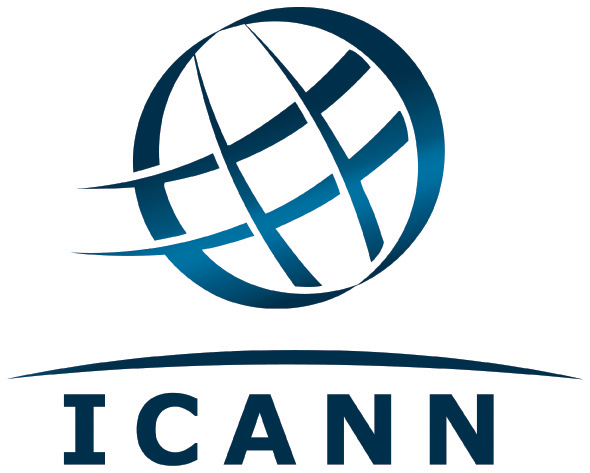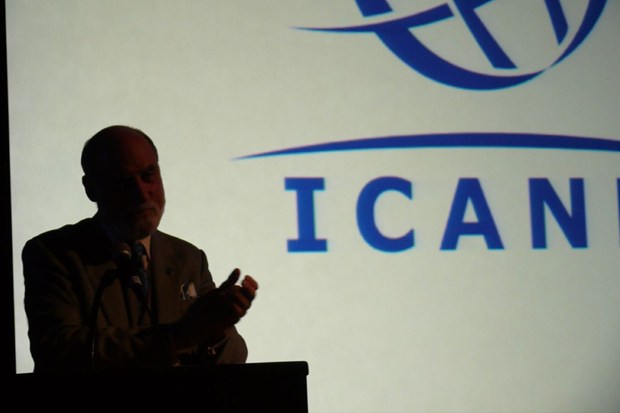David Briddock describes a major revamp to
the internet domain names system.
The internet landscape is about to undergo
a radical change. Familiar domain names ending with '.com', '.co.uk', '.net'
and '.org' are about to be supplemented by hundreds of new suffixes.

ICANN
It's the biggest shakeup of the domain name
system since the popularisation of the web. Many well-known and popular
websites will have a brand new moniker. So what's it all about? What's the
purpose of these new domains? Who will own them? And how will it change the web
surfing experience?
Status Quo
The domain name system is managed by the
Internet Corporation for Assigned Names and Numbers (ICANN), an organisation
established in 1998 with a US government mandate to "Improve the Technical
Management of Internet Names and Addresses." By defining and managing a
relatively small list of generic top-level domains (gTLDs), it lowered the cost
of registration for consumers and businesses.

Currently,
each domain name registration consists of a top-level suffix, such as '.com',
plus a second-level user-specified string, 'microsoft' for example
ICANN also administers non-generic
categories. There are geographic or country designation domains such as '.eu'
and '.asia'. Themed domains including '.jobs', '.aero', '.travel' and
'.museum'. And sponsored top- level domains like '.edu', '.int', '.gov' and
'.mil'. However, it's the gTLDs that are about to change.
Currently, each domain name registration
consists of a top-level suffix, such as '.com', plus a second-level
user-specified string, 'microsoft' for example. Once registered, this unique
combination is permanently assigned to the individual or organisation, theirs
to keep as long as they continue to pay the yearly registration fee. It's
rather similar to the UK's DVLC system for personalised car registration
plates.
With this system 'microsoft.com' and
'microsoft.co.uk' are treated as completely separate registrations. Therefore,
it's possible that the company and webs ite at 'microsoft.co.uk' might
be completely different from the one located at 'microsoft.com'. A very
perplexing scenario for the web surfer. In practice, this forces companies to
register a complete set of top-level and second-level combinations to protect
their trademark and avoid any confusion.
The new domains
So what's changed? Well, now you can apply
for a bespoke top-level domain string. Any name can be proposed, although there
are guidelines on what's likely to be accepted. International languages are
supported, so the string can be in Chinese, Arabic or Cyrillic.

Apart
from the financial side of things, ICANN will also perform checks on the nature
and strength of each applicant
Before you get too excited, it's not a
low-cost operation. In fact, ICANN's price Is deliberately set very high to
deter 'timewasters'. First, there's an up-front fee of $185,000, followed by an
annual fee of $25,000. In addition there's the possibility you'll have to
reserve some money for lawyers' fees (more on this later).
And taking control of your own gTLD is a
weighty responsibility. It equates to owning a piece of the internet. So, apart
from the financial side of things, ICANN will also perform checks on the nature
and strength of each applicant. In the end, only a relatively small number of
medium- to large-sized organisations will end up operating one or more custom
TLDs.
Excitement builds
However, for those with the appropriate
funds and backing, there are plenty of reasons to be excited. By not relying on
the second-level domain to supply the unique string there's no longer any
ambiguity for web surfers. If an address ends with '.microsoft' it's guaranteed
to be associated with the one-and-only Microsoft organisation, and nobody else.
A perfect branding solution.
Just as importantly, controlling your own
top-level domain means having total control of second-level domains.
Organisations will therefore be keen to acquire a portfolio of business-related
strings, trademarks and brands. Google, for example has applied for the
'.google' trademark, core business strings like '.docs' and branded domains
such as '.youtube'.
A gTLD owner can decide to operate an
exclusive club, or open things up to the masses. Let's say you own a cloud
hosting company and have successfully applied for '.cloud'. Now you can sell
any number (millions if you like) of second-level domains, such as
'securebackup.cloud' or 'david.cloud'. For another example the address 'www.xbox. com/kinect' can become 'kinect.xbox', and
games console software updates available at 'downloads.xbox'.
The net effect will be a whole new domain
landscape. And search engines will love these new suffixes. Previously a '.com'
domain might belong to an organisation, a user group or just an individual. Now
the whole address is vendor specific, searches can become more accurate and
precise. As most of us surf the web via search engines, and rarely go past the
first page of results, this it certain to change our browsing experience.
It's a secret
The application process was a secret
affair, application information being entered into ICANN's secure systems.
Although certain organisations were happy to publicise some of their domain
string applications, only on a specified 'Reveal Day' was the full list of
domain strings posted for public scrutiny. At least that was the plan.
In April 2012 a widely reported technical
glitch in ICANN's systems may have allowed some applicants to see other
applicants' confidential information. The problems caused a temporary
suspension of the requesting process, which was rebooted on 22nd May. How much
information was exposed and who saw what is still shrouded In mystery.
The 13th June 2012 was 'Reveal Day'. ICANN
published a total of 1,930 applications, with 116 strings using a non- Latin
character set. Some organisations have spent millions, with 101 applications
from Google, 76 from Amazon and 11 from Microsoft. Top Level Domain Holdings
were also big spenders with 92 applications, including '.hotel', '.london' and
'.music'. Somewhat surprisingly, Apple applied for just one, while Facebook and
Twitter didn't bother at all.